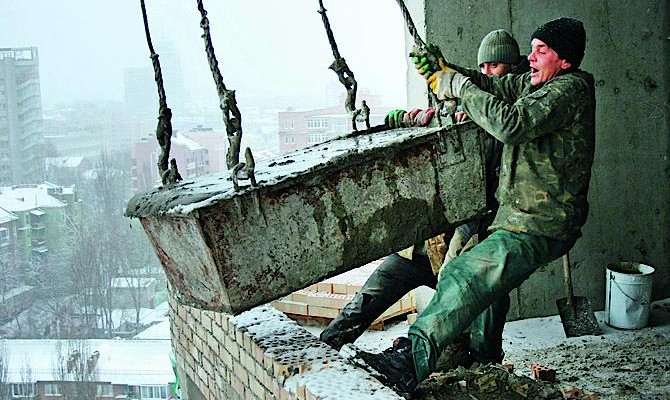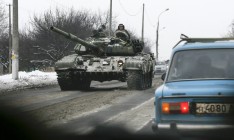Business
crisisHeidelbergCement shut down its plant in the Donbass due to poor economic conditions and the war

Armed hostilities in the Donbas led to the shutdown of yet another industrial enterprise with foreign investment. The other day it was announced that HeidelbergCement AG, a major global player on the construction materials market, closed its cement plant in the Donetsk oblast due to its unwillingness to cooperate with the DPR. Market players also point to the economic underlying reason – at the moment the industry is going through tough times and the market is shrinking.
Stop cement
One of the largest manufacturers of construction materials in the country German group HeidelbergCement AG suspended operations of the cement plant in the Donbas region of Ukraine. Director for Public and Investor Relations Andreas Schaller confirmed that the group could not fully operate on the territory under the control of the DPR.
The matter is about the the Amvrosiyivskiy Cement Plant located in the village of Novoamvrosiyivske in the Donetsk oblast. Schaller said the group shut down the company because it did not want to cooperate with the authorities of the DPR, which does not fit into the regulations of the European Union regarding work in the occupied territories. “Now, the group is monitoring the situation and has not yet made a decision about the future of the plant. But we hope that the situation goes back to normal and the group will be able to use the plant in the future,” said Schaller.
Representative of HeidelbergCement in Ukraine, on condition of anonymity, told Capital that the shutdown of the company is also due to economic reasons, in particular, the significant decline in demand in the region, which accounts for the lion’s share of sales this year. Schaller, in turn, said that in 2014 sales of the group’s cement in Ukraine decreased by more than 20%.
HeidelbergSement came to the Ukrainian market in 2001. The cement line is represented by HeidelbergCement Ukraine, which controls cement plants in Kriviy Rih (capacity of 1.6 mn t of cement and 1.1 mn t of clinker per year), Dniprodzerzhynsk (650,000 t of cement and 350,000 t of clinker), in Novoamvrosiyivske (2.5 mn t of cement and 2 mn t of clinker) and Yenakieve (450,000 t of cement).
Shrinking market
Professional players are not particularly surprised by the shutdown of the cement plant in the east of Ukraine. The situation on the market is complicated and demand on it has been in decline for several years, commented Executive Director of the Ukrcement Association Petro Lopatyev. Industry experts point out that such a situation developed due to the unfavorable economic climate in the country and the outflow of investments due to the hostilities in the east.
Lopatyev says the market picked up during the construction of a number of infrastructure facilities for the EURO 2012 and froze again as soon as the competition ended. This year, cement production will decline even further – within 10 months all plants operating in Ukraine cut their output by 6% compared with the same period last year, down to 8 mn t, said the source. He added that the Ukrainian market is small for such a number of companies, because capacities allow for the production of approximately 21 mn t of cement per year. The last time Ukrainian enterprises produced such a volume back in the 1990s.
Running on fume
The increase of the cost of production is also putting pressure on market players. Some that their profit margins are already a low level that is critical for many companies. The matter is that today the cement industry in Ukraine is extremely outdated and energy costs account for over 60% of production costs. In addition, according to Ukrcement, more than 70% of the capacity of the cement industry (39 furnaces) use the outdated wet production process, although in neighboring Poland this figure does not exceed 2%.
In fact, today there are only two companies in Ukraine which transitioned to modern dry method of production – Ivanofrankivskcement and Podilskiy Cement, said Supply Director of the Ivanofrankivskcement Bohdan Skrypyuk. “Despite the problems in the industry, our company was able to launch a new line of energy-saving technology to replace the old one, which helped double production of cement,” he stressed. In June the company launched a new line, which reduced the specific fuel consumption per 1 ton of clinker from 1,575 kg to 740 kg, and increase capacity from 1.2 to 2 mn t.
The situation with energy resources also does not add optimism. Cement producers switched from gas to coal just a few years ago, which at first raised the profitability of production. But now because of the exchange rate fluctuations and the coal shortage on the market, companies have to bear the additional costs.







 of the agreement of syndication with Financial Times Limited are strictly prohibited. Use of materials which refers to France-Presse, Reuters, Interfax-Ukraine, Ukrainian News, UNIAN agencies is strictly prohibited. Materials marked
of the agreement of syndication with Financial Times Limited are strictly prohibited. Use of materials which refers to France-Presse, Reuters, Interfax-Ukraine, Ukrainian News, UNIAN agencies is strictly prohibited. Materials marked  are published as advertisements.
are published as advertisements.